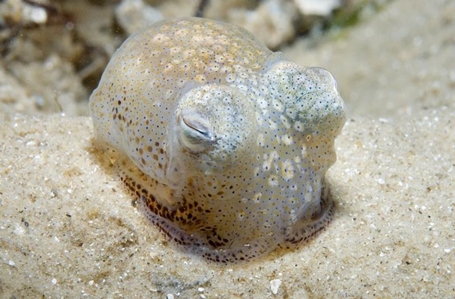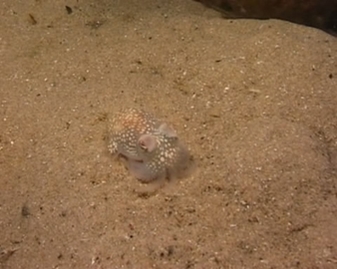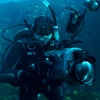General Description
Tiny round, bottom living squid. Small pair of kidney-shaped fins on sides of body encompassing the rear third of the body. Orange or yellow in colour, comprised of large pale spots (leucophores) scattered over the body, head and arms. Underside of the head and body covered in regular small rounded glands that produce slime (mucous). Mantle length to 3 cm.
Biology
These small squids hide during the day by wriggling into the sand and using two arms to rake sand grains over their heads and bodies. At night, they emerge to hunt for small crustaceans, particularly isopods. If attacked they squirt a large amount of slime from glands under their body. The slime appears to contain chemicals that deter or scare off predators. Its chemical composition is still unknown. Females lay eggs in clumps, glued together and covered in sand grains, usually at the bases of seaweeds or seagrasses.
Habitat
Sand and mud habitats in coastal waters, often near seagrass beds to a depth of at least 65 m.
Seagrass meadows
Soft substrates
Distribution guide
Southern Australia.
Species Group
Depth
Shallow (1-30 m)
Deep ( > 30 m)
Water Column
Max Size
3 cm
Diet
Carnivore
Harmful
Potential to bite, especially if handled. Venom status unknown.
Commercial Species
No
Global Dispersal
Native to Australia
Identify
Conservation Status
- DSE Advisory List : Not listed
- EPBC Act 1999 : Not listed
- IUCN Red List : Not listed






